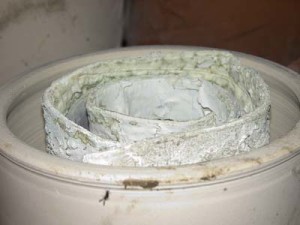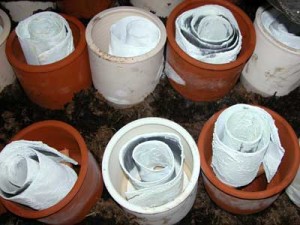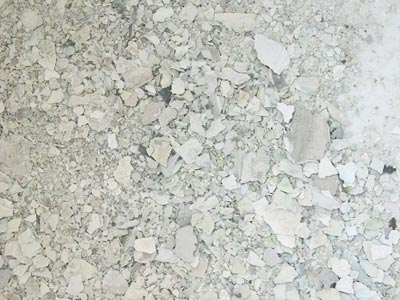Stack pots after two weeks of corroding. The smell of acetic acid (vinegar) is still present inside the stack shed, but not as sharp as it was initially. The temperature within the compost heap is raising, but on the surface it is still at ambient temperatures.
The relative humidity inside the shed is nearly 100%. Controlling the compost stack temperature is critical to maintaining conditions suitable for lead corrosion. An inovative method was developed for maintaining the temperature inside the shed.
A close view of the coils shows the extent of corrosion on the lead after only two weeks, yet unevenly spread across the lead sheet. This was a problem often discussed in literature but without solution.

Well, after 12 weeks of waiting, the flakes are scraped off the surface of the lead strips and prepared for use. The flakes are washed and pressed into a cake form which is easier for artists to handle. It can be made in small amounts as needed by mixing with a drying oil such as linseed. As you are handling a product like this, always use the utmost care. I make pigments in small batches (enough for just a day or two) using a respirator, gloves, and smock. Always work in a space with no breezes blowing such as a furnace vent or fan. Make sure the air is completely still and wipe down work areas carefully.
- The flakes are plainly visible here. One of the most beautiful advantages to this pigment is the variety of particle shapes and sizes. Light will reflect off the surface of the painting in a myriad of directions and intensities because of this. Images and information courtesy George O”Hanlon, Natural Pigments


